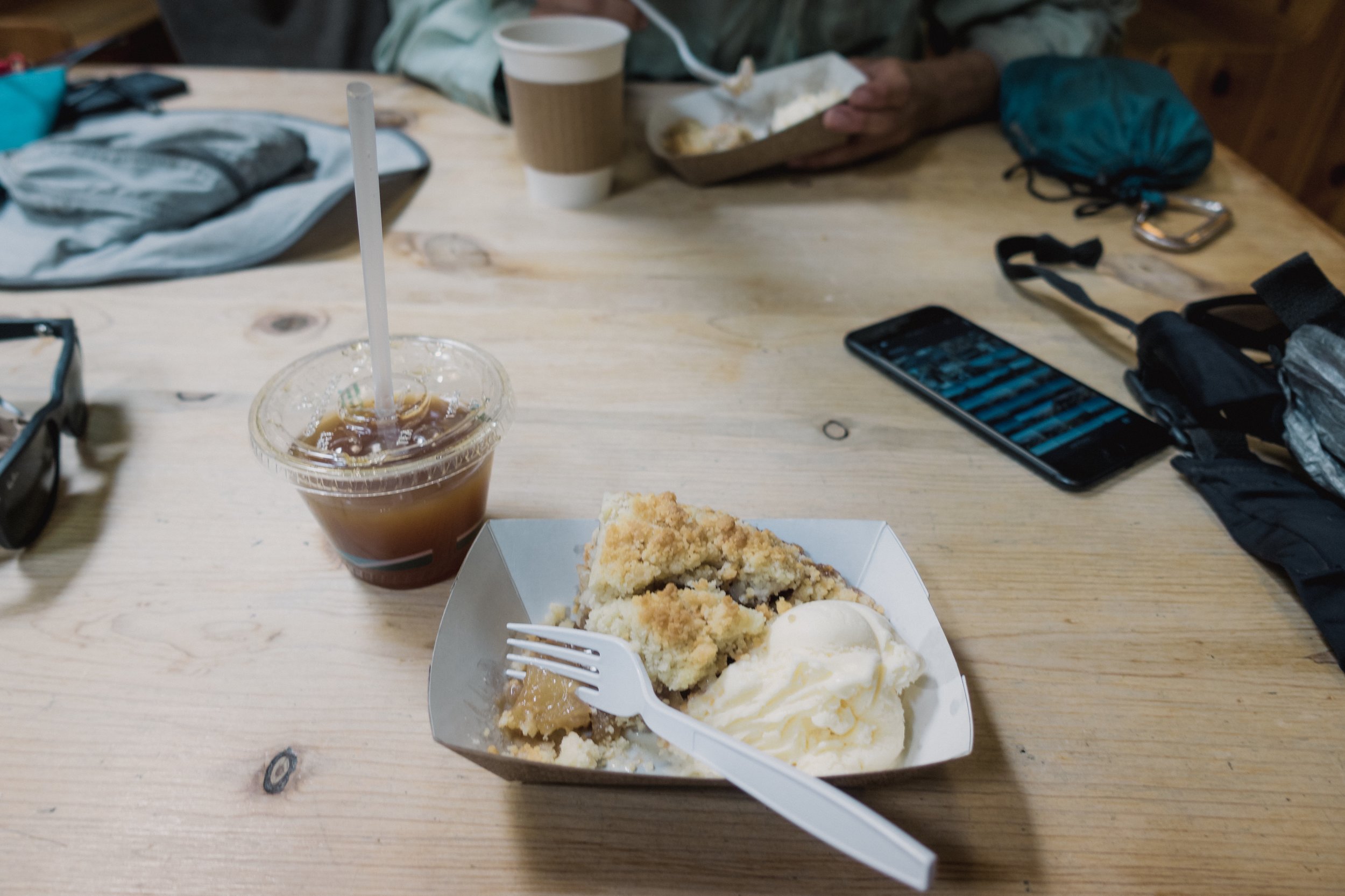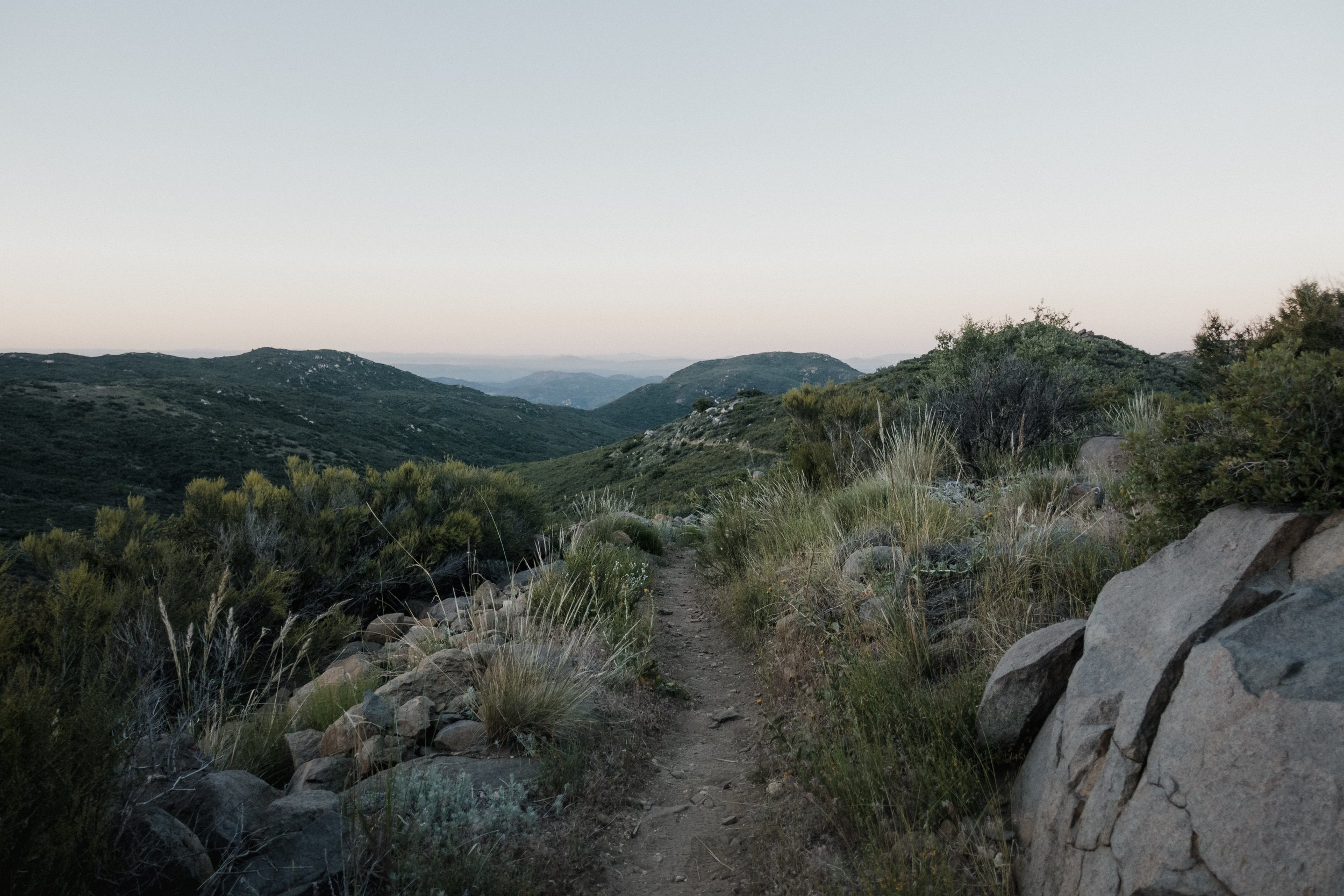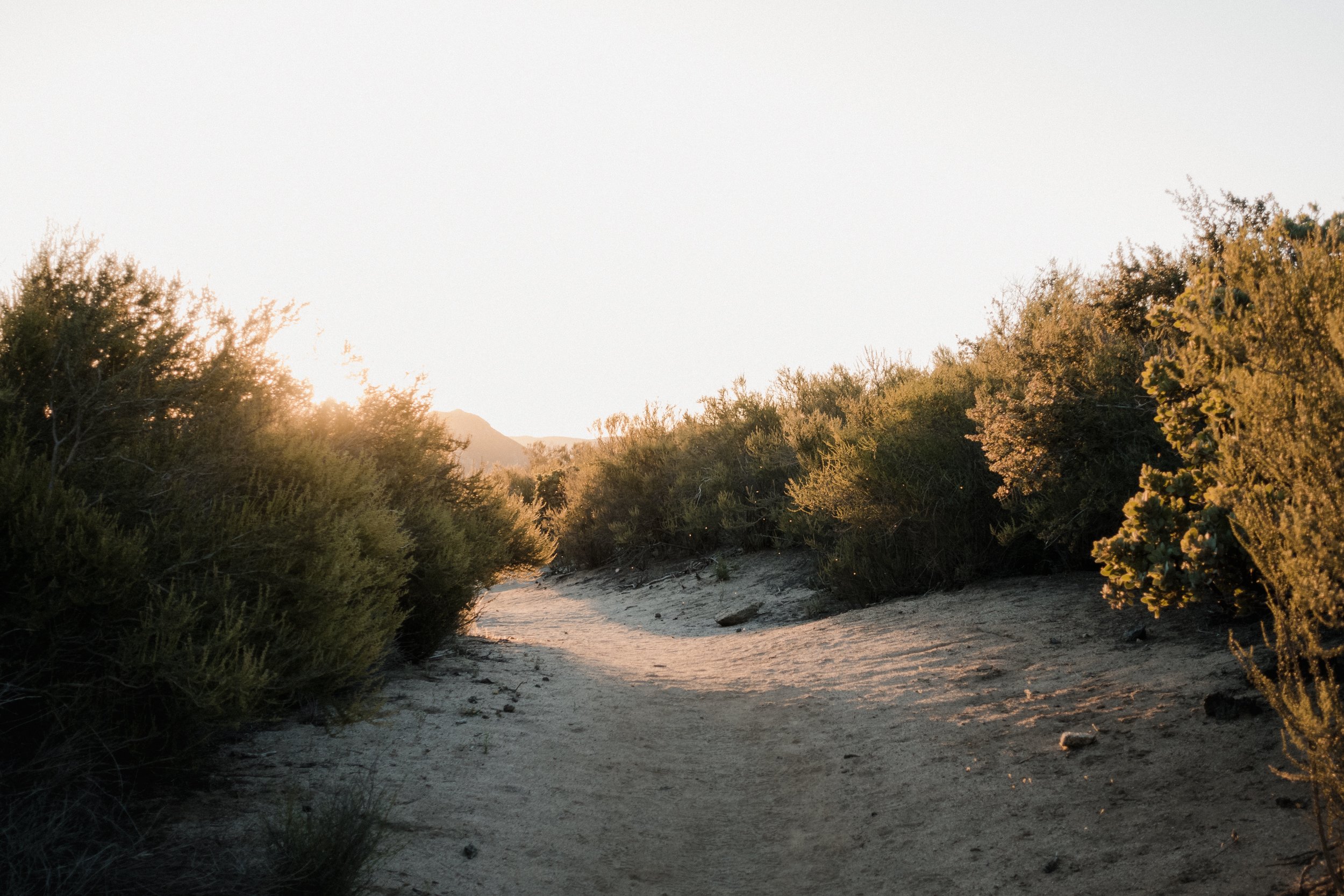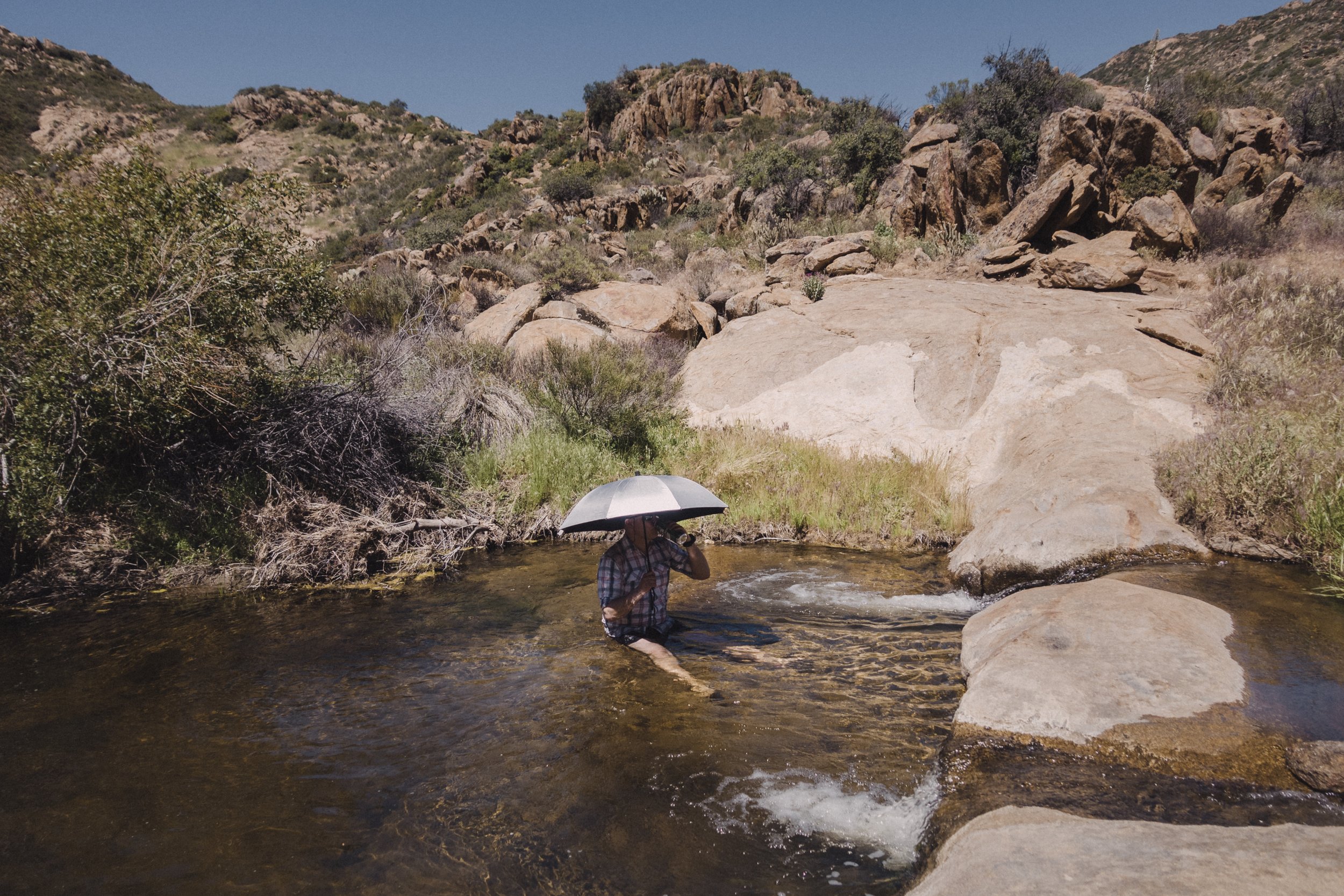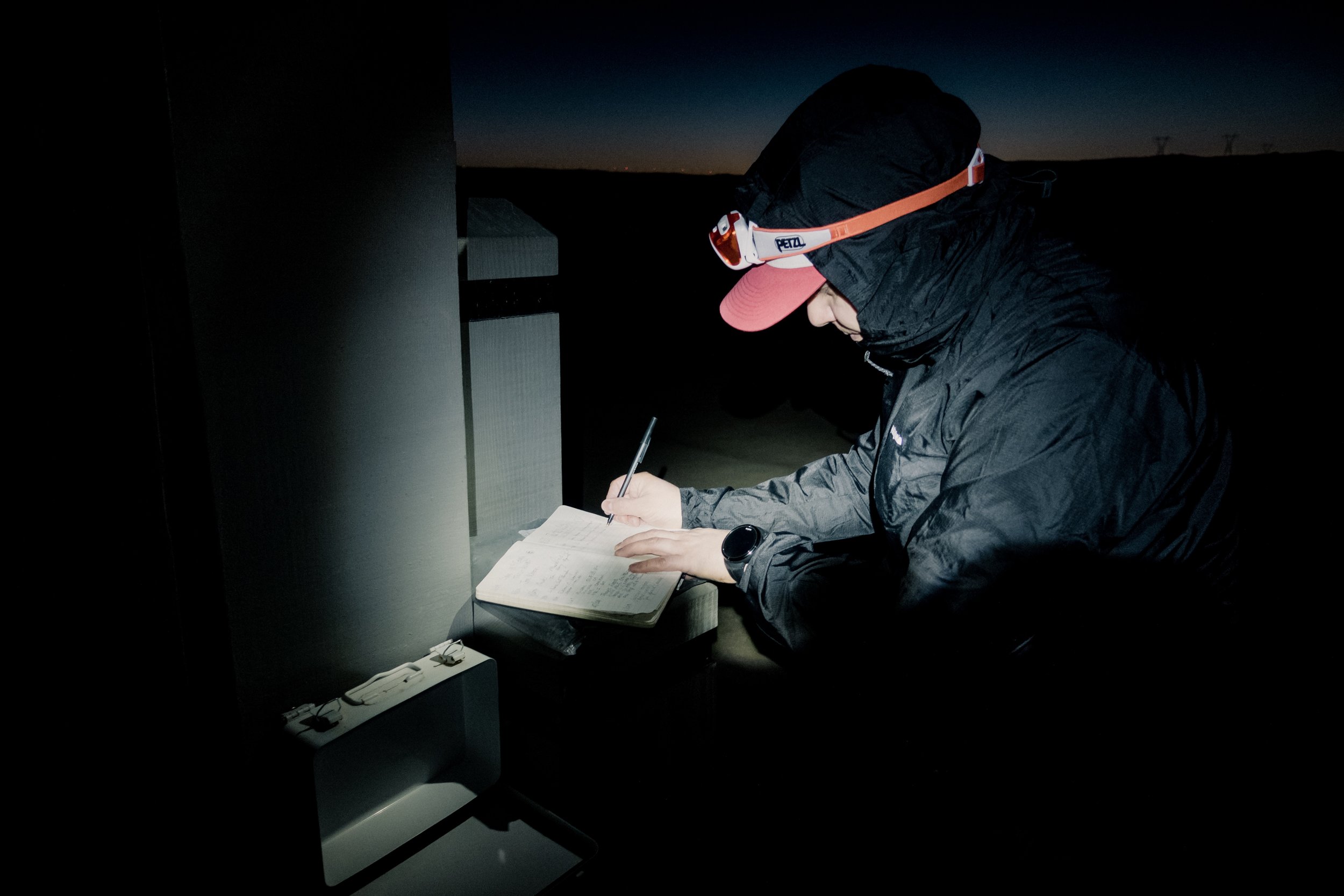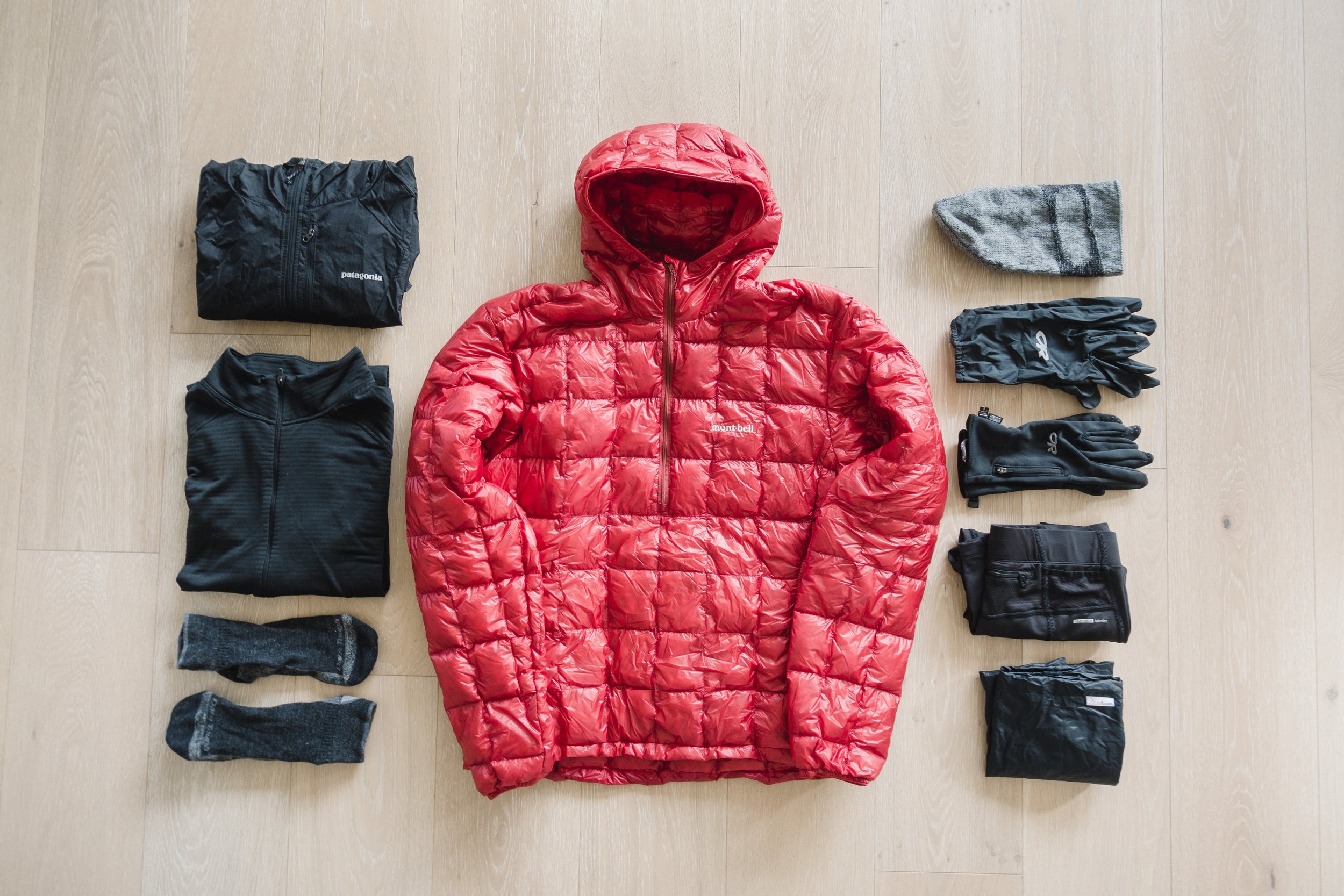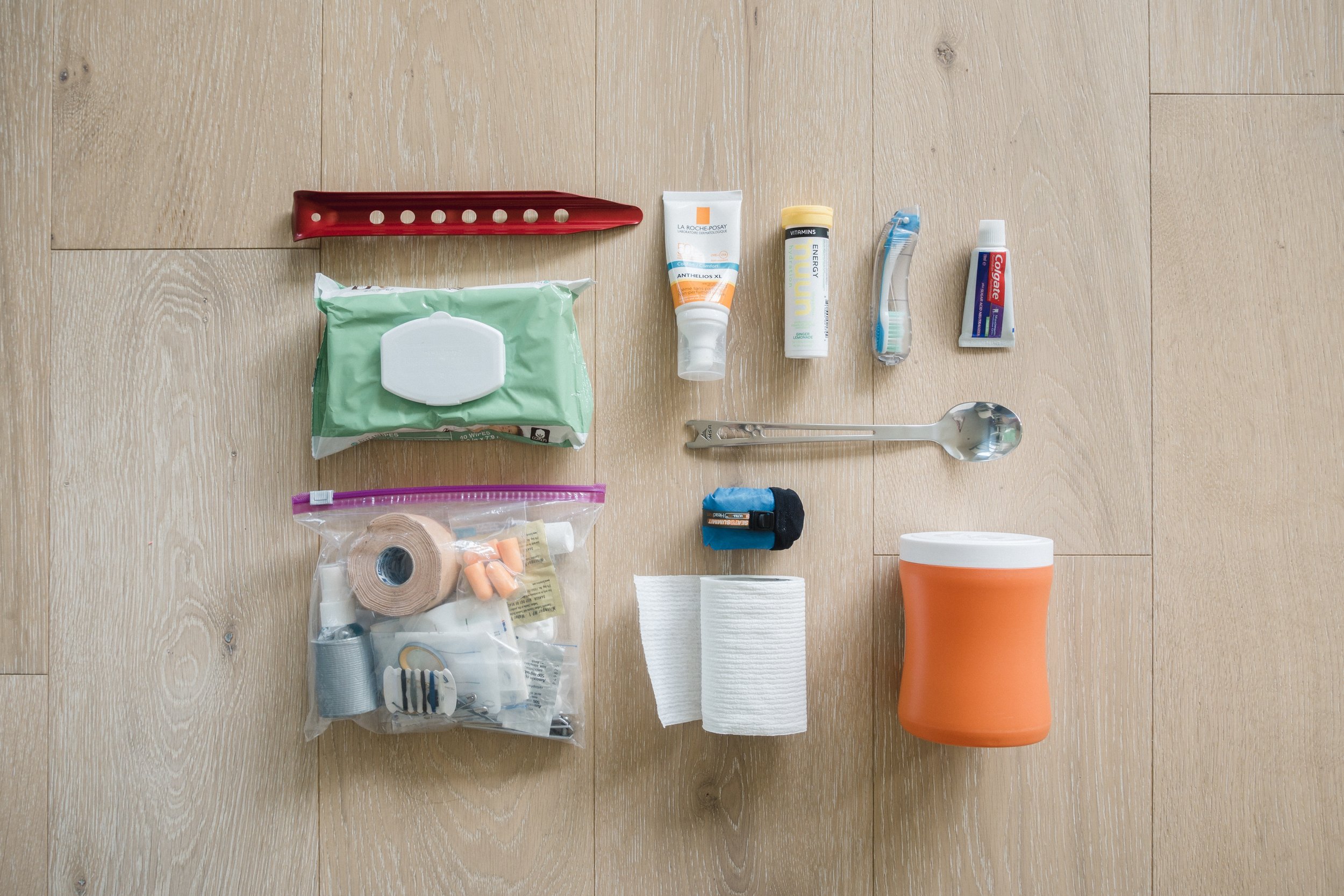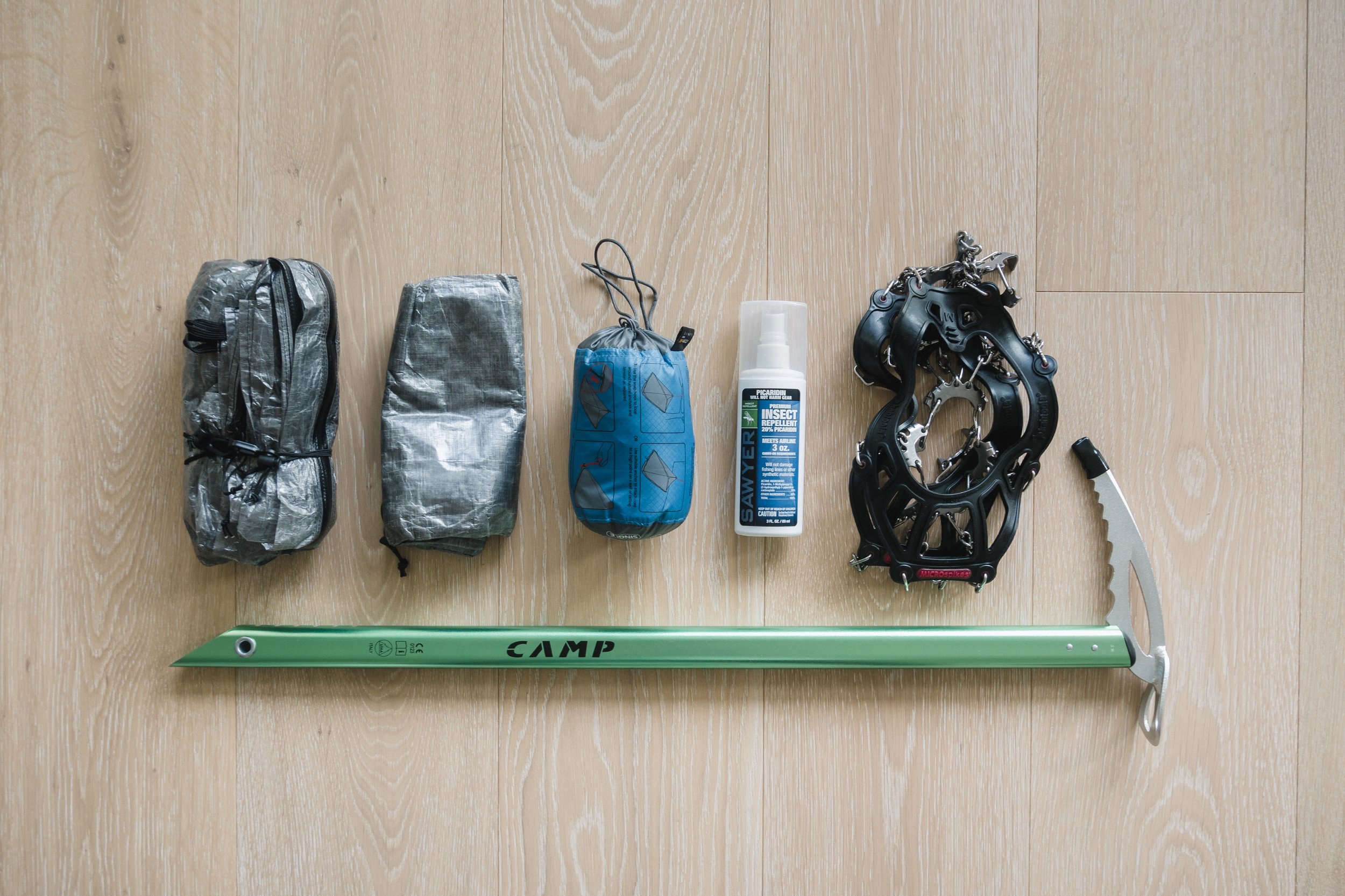Like any hobby or a pastime, hiking has its own lingo and vocabulary. Here’s a short introduction to some of the terms and acronyms used in thru-hiking and hiking in general.
Please enjoy!
AYCE (acronym): All-You-Can-Eat. For when you get the hiker hunger.
Base-weight (noun): The weight of your pack excluding food, water, and other consumables. Very important for Gram Weenies like me.
Bear Box (noun): Bear boxes are generally found in established campgrounds along areas of high bear activity. They are lockable bear proof boxes where you can store food and anything else that might smell attractive to a bear (cooking pots, toiletries etc.). The boxes are usually located a safe distance from tent sites.
Bear Can (noun): Short for a bear canister. Similar to a bear box except that it is portable and designed to be carried by hikers. A bear can is mandatory in several sections of the PCT, mostly through the High Sierras. It should be stored at least 100 feet (30m) from your campsite but also well away from cliffs, ledges, and rivers. Bear cans are typically loathed by hikers because they are bulky, rigid and heavy. But they do make a convenient camp stool.
Bonus Miles (noun): These are all the extra miles that aren’t officially part of the PCT but will nevertheless need to be hiked during the course of a typical thru-hike. These include miles to and from resupply points, post offices, lodgings, off-trail water sources, scouting for sheltered and/or flat campsites, prospecting for a nice Cat Hole and the inevitable navigational mishaps.
Bonk (verb): Running out of energy to hike due to eating too few calories.
Bounce Box (noun): The Bounce Box is a package that you continually mail to your future self as you travel along the trail. Not all hikers use this.
Bubble (noun): Also known as the Herd (check below).
Cache (noun): Stuff that is stored or squirreled away in a secret or inaccessible location, for use at some point in the future. Trail Angels and hikers themselves have increasingly cached food and water along the trail, particularly in the dry desert sections of Southern California.
Cairn (noun): A man-made stack of stones indicating where the trail continues.
Camel Up (verb): The act of drinking as much water as you physically can when you are at a water source. The theory is that you over-hydrate yourself as much as possible to lessen the need for carrying heavy water. “Cameling Up” at a cache is not considered good trail etiquette. Instead, hikers should only take what they really need, leaving as much of this precious commodity for a potentially more desperate hiker behind them.
Cat Hole (noun): One of the cornerstones of LNT (Leave No Trace) philosophy, and also, considered good trail etiquette. It's a hole you dig to not leave your poop out on the trail. Cat hole should be 6-8 inches deep, 200 feet from campsites or trail, and far away from all water sources. You should always carry out your TP (and for the love of god, do NOT burn it!).
Cowboy Camping (verb): Sleeping outside in the wilderness without an overhead shelter (i.e. no tent or tarp). If weather, crawlies, and bugs permit, this is a fast way to setup and take down your camp. Also, a good way to enjoy the stars on a clear night.
Day Hiker (noun): A hiker who is only hiking for a day.
Dry Camping (verb): Camping without a nearby water source. For the most part, thru-hikers will want to camp close to a water source to save the hassle of lugging water to cook or to drink. In bear country, hikers often cook their dinner close to a water source and then carry on hiking for a few hours after dinner.
FKT (acronym): Fastest Known Time. Every few years someone will test themselves by attempting to hike from one end of the trail to the other, faster than anyone else has ever hiked it. If they accomplish this goal, they have the fastest known time. Current supported FKT is held by Karel Sabbe, who in 2016 finished the 2659 mile PCT in 52 days, 8 hours, and 25 minutes. That’s averaging over 50 miles (81km) per day.
Flip-Flop (noun): A tactic used to complete the trail in a single season whereby you do a section of the trail, then skip a section with the intention of going back and doing that section later. For example, in a heavy snow year, a thru-hiker might skip the Sierras, finish the rest of the trail and then return to the Sierras once the conditions are more favorable to finish off the missing part.
Floaties (noun): Any item found floating in your water after filling up your water bottles. Usually, poop.
Giardia (noun): A nasty intestinal parasite that causes acute stomach upset, chronic diarrhea, nausea, and all of the other associated unpleasantries. This unsavory little character is transmitted outside of the body via feces and seems to somehow always find its way into water sources. Giardia is a major incentive for thru-hikers to practice good trail hygiene, adhere to the LNT philosophy and always filter or treat questionable drinking water.
Glissade (verb): From the French word for sliding. In theory, glissading is a controlled way to expedite one‘s path down a steep slope of snow or ice by gliding gracefully on the feet or buttocks. In practice, it’s hikers sliding down snowy or ice-covered hills on their asses while having an incredible time. Also known as ass-path.
Gorp (noun): Another term for trail mix.
Gram Weenie (noun): A hiker who becomes obsessed with reducing his or her Base Weight. I would consider myself to be a Gram Weenie.
Herd, The (noun): A large group of thru-hikers that sets off together along the trail. Usually happens in the Southern California and thins out by the time hikers reach Northern California. The herd can cause congestion, overcrowding, and damage to the trail. Being behind the herd has the benefit of bountiful Hiker Boxes.
Hiker Box (noun): A box where hikers donate unwanted food or gear for other hikers. Typically found at resupply points along the trail.
Hiker Funk (noun): This obnoxious smell is the result of a unique combination of excessive sweat, economical use of laundry, irregular showering and a generally scant regard for personal hygiene.
Hiker Hunger (noun): Walking dozens of miles per day, every day, up and down mountain passes burns a lot of calories. Since you can only carry so many calories on your back, your body is constantly running a deficit and you are constantly hungry. This insatiable, bottomless hunger that torments thru-hikers is called Hiker Hunger.
Hiker Hobble (noun): A phenomenon where once the hiker removes his or hers backpack, he/she starts to limp and wobble. Usually, develops after the first hundred miles, and doesn’t let up.
Hiker Midnight (noun): 9:00 pm (although hotly debated). Most serious and well-mannered thru-hikers will be tucked up by this time so that they can get a good 8 hours of sleep and still be up at the crack of dawn.
Hiker Trash (noun): Hiker Trash is a term used to describes the consequences of living in the wilderness, surrounded by your own funk for months on end. Often confused with homeless.
HYOH (acronym): Hike Your Own Hike. Everyone's hike is different so be respectful of other people‘s needs, gear choices, pace, and so on. Not meant to be used as an excuse for acting like an asshole on the trail.
JMT (acronym): The John Muir Trail which overlaps the PCT for almost 200 miles / 322 km in the Sierra. JMT hikers typically head southbound while most PCT hikers head northbound.
LNT (acronym): Leave No Trace.
Mail Drop (noun): One of the ways for thru-hikers to resupply themselves with food, equipment, and other essentials while on the trail. Packages are sent for general delivery to post offices in towns along the trail where they are held until collected by the hungry hiker. As this method of resupplying depends on the inconvenient opening hours of post offices, many thru-hikers choose to resupply as they go and only send mail drops to locations where groceries are not available.
NoBo (noun): Northbound hiker.
Nero (noun): Nearly a Zero. A day when you only hike very few miles. Neros often occur when a thru-hiker arrives in a trail town and needs to take care of resupply, laundry, and other town activities before heading back on the trail.
Pee Rag (noun): A small piece of fast drying, absorbent fabric that some/most female thru-hikers carry on the outside of their packs. Helps to keep the Hiker Funk at bay.
Pink Blaze (verb): The act of hiking more quickly than you normally would, with the intention of catching up to a certain female hiker; to hike according to the schedule of a female hiker.
Postholing (verb): The term is derived from the hole that would be dug to sink a fence post into. When hiking across snow and your feet break through the snow your legs look like aforementioned fence poles sticking out of the snow. Postholing slows movement to an agonizing crawl, takes a ludicrous amount of energy and can be dangerous because it’s often impossible to know what's hidden beneath the surface. Postholing is one of the things hikers dread as they head into the Sierra. Can be mitigated by timing snow travel to early morning when the surface of the snow is still frozen from the night before.
Puffy (noun): A name for a down jacket.
Ray Day (noun): June 15th. In an average snow year in the Sierra Nevada Mountains, Ray Day is the best date to leave Kennedy Meadows on a northbound thru-hike. Named for Ray Jardine, the Author of the Pacific Crest Trail Hikers Handbook. This date is based on two factors: it’s late enough to allow sufficient snowmelt in the Sierras for a safe hike, and it’s early enough to allow time to reach Canada before winter.
Resupply (noun): When a hiker hobbles out of the wilderness and back into town to get food and electricity.
Ride Bride (noun): A female hiker accompanying a male hiker when attempting to hitch a ride to town. A male thru-hiker who is accompanied by a female is far more likely to pick up a ride.
Section Hiker (noun): A hiker who's only hiking a section/sections of the PCT.
SoBo (noun): Southbound hiker.
Stealth Camping (verb): The term given to camping in an unestablished site or on land without permission from the landowner with the intention of not being seen. Offers a greater degree of solitude and can also reduce the chances of bear encounters.
Sun Cups (noun): An uneven surface of snow resembling a giant egg carton. As the snow melts in the spring, pockets of water form on the surface of the snow. This water warms up in the sun and causes the snow under it to melt faster than the surrounding snow. The resulting uneven surface is difficult to walk on.
Thru-Hike (noun): Traditionally a contiguous hike from one end of a trail to another. Usually, the term is only applied to hikes longer than 1,000 miles /1,609 km.
Thru-Hiker (noun): A hiker who is attempting to complete a Thru-Hike.
TP (acronym): Short for toilet paper. LNT code of conduct requires that if you pack it in, you must always pack it out.
Trail Angel (noun): A person who performs acts of Trail Magic and assists hikers expecting nothing in return, monetary or otherwise.
Trail Family (noun): A group of hikers that stick together and become very close as a result of their shared experiences along the trail.
Trail Legs (noun): About 4-5 weeks into a thru-hike your legs start to get used to the grueling long days and become incredibly strong, allowing you to hike for miles and miles.
Trail Magic (noun): Any random act of kindness that is offered or provided to thru-hikers. These amazingly generous deeds are like magic because they seem to always occur at a time or in a place when they are most needed; a water cache in a desert, a ride into town on a rainy day, or otherwise awesome occurrence.
Trail Name (noun): A nickname used by a hiker during their thru-hike, given by other hikers. An easier way of identifying hikers instead of their actual names, especially if you have numerous John’s on the trail. There are few unwritten rules when it comes to trail names. Generally, you don’t get to choose your own trail name, it is given to you by other thru-hikers and it will reflect your personality, appearance, style of hiking or some quirky thing that you do on the trail.
Trail Register (noun): A logbook, piece of paper, or otherwise inscribe-able object used for documenting hikers passing of a point on the trail.
Triple Crown (noun): The Triple Crown of Hiking is an informal title awarded to those who complete all three of the major U.S. long-distance hiking trails; The Appalachian Trail (AT), The Pacific Crest Trail (PCT), and The Continental Divide Trail (CDT). Only about 500 people have completed this 7,910 mile / 12,730 km feat of endurance. Only a small handful of hikers have managed to get the job done in a single calendar year.
Ultralight hiker (noun): A hiker who’s base weight is under 10lbs / 4,54kg.
Vitamin I (noun): Trail name for Ibuprofen.
Vortex (noun): Anything off of the trail that sucks a hiker in and is difficult to leave. A vortex will keep a hiker off the trail for an extended period of time.
Yogi (verb): The act of cleverly soliciting food, drink, rides, or otherwise useful things from unsuspecting strangers hikers meet along the trail, often without directly asking. From Yogi the Bear who managed to obtain picnic baskets from unsuspecting campers, though Yogi’ing doesn’t involve the same techniques. Yogi’ing is often done "Columbo style”, by striking up a conversation with a non-hiker, asking leading questions, and allowing the person to decide whether he wants to offer help.
Yo-Yo (verb): Whereupon reaching the end of the trail you simply turn around and head back to where you started. This is pretty rare but does happen.
Zero (noun): A rest day when zero trail miles are walked. Zeros are typically spent in trail towns or at the home of a Trail Angel but can sometimes be taken on the trail. Some zeros are planned, others are forced upon the hiker by injury or exhaustion.






